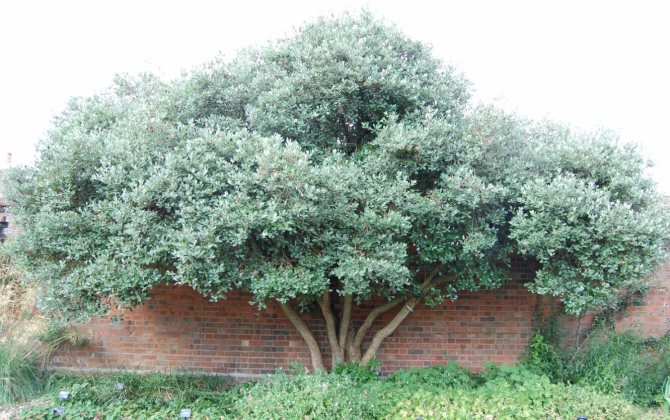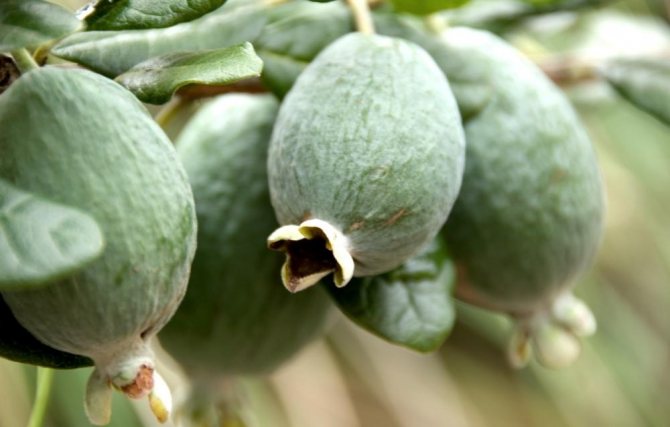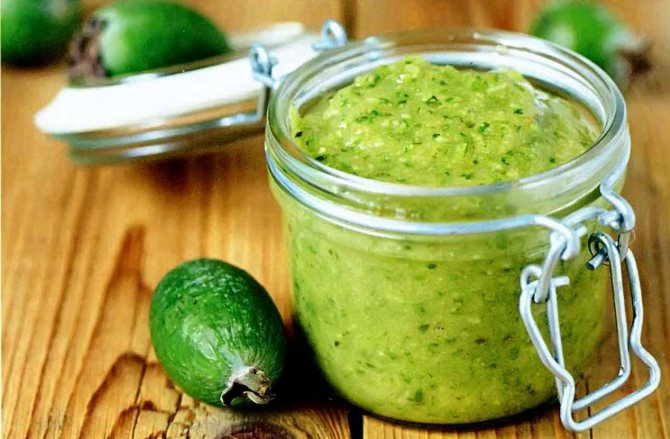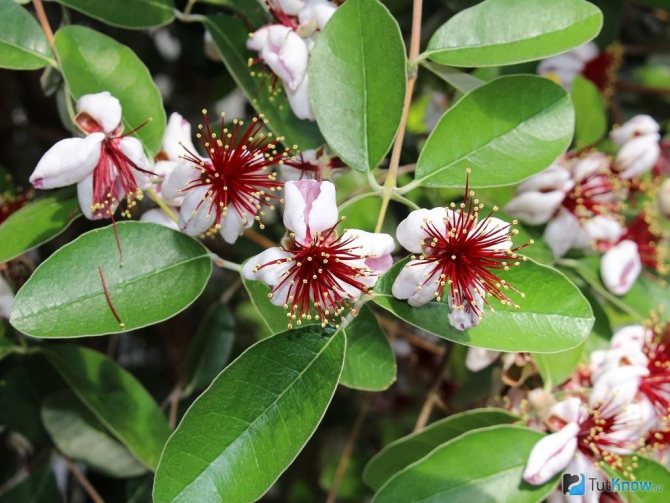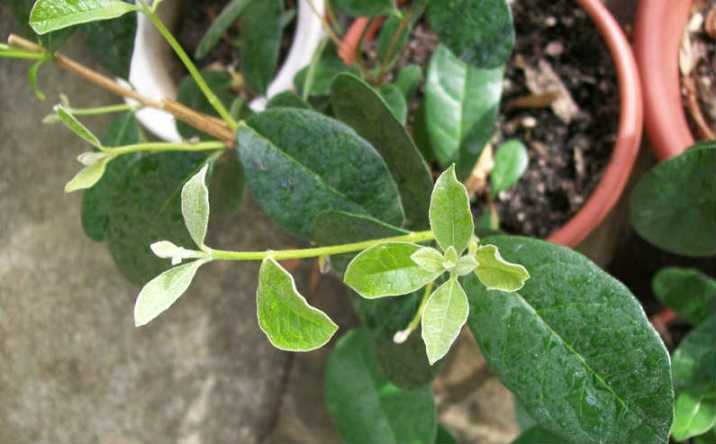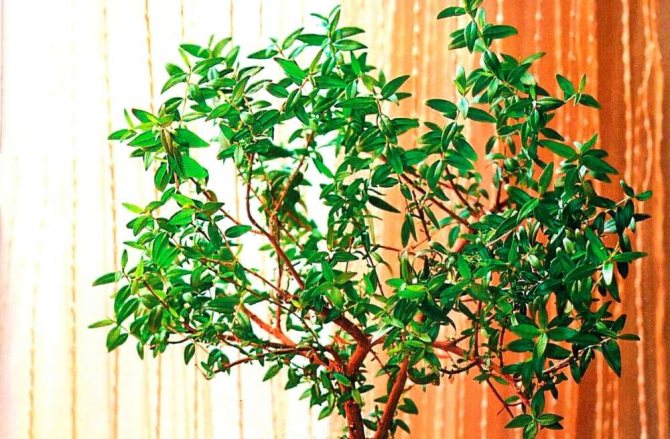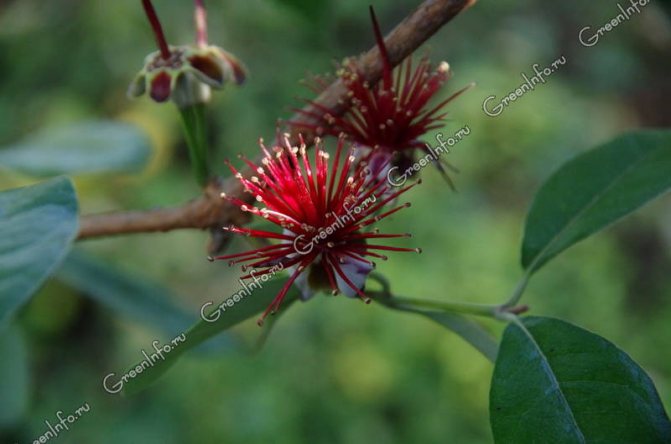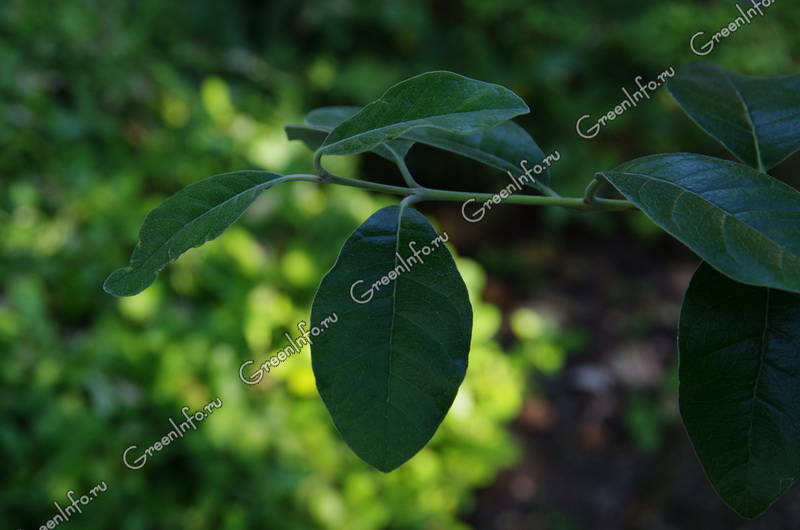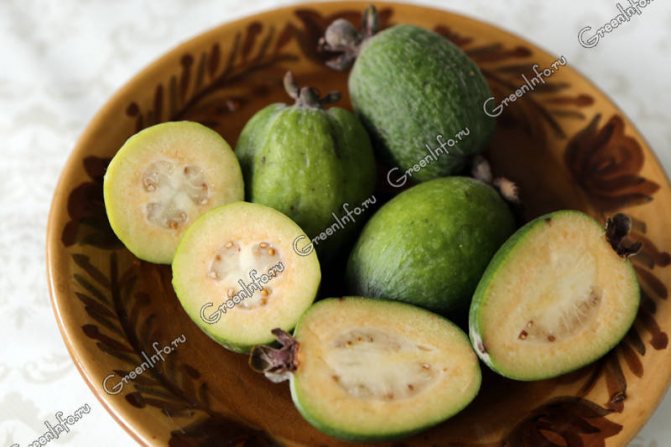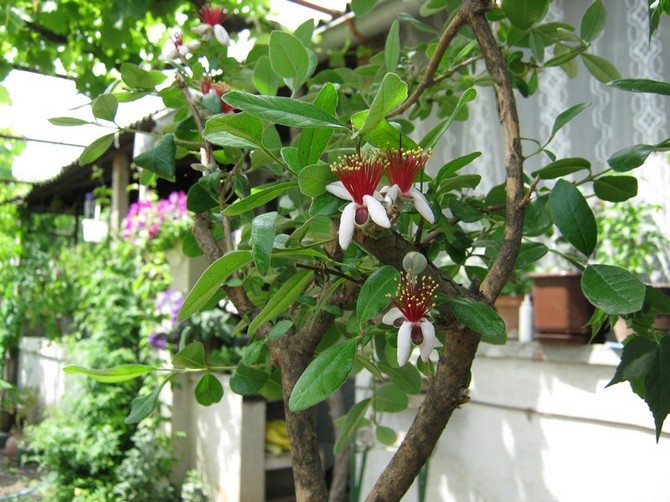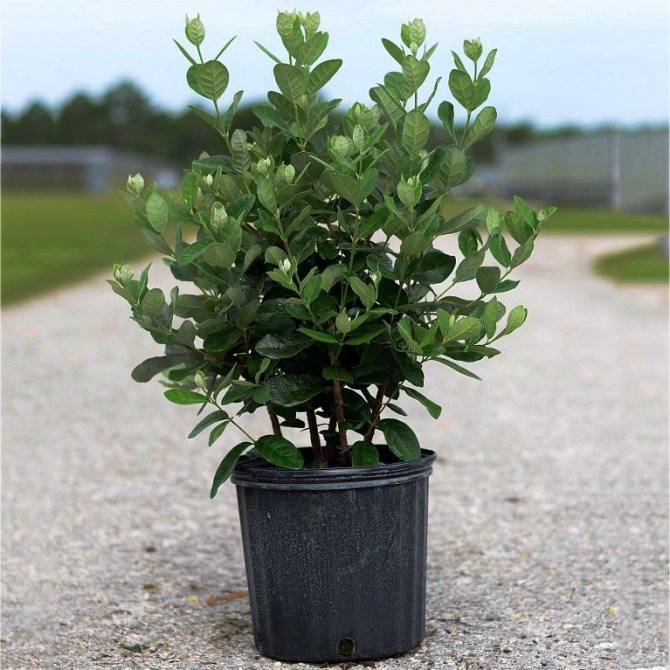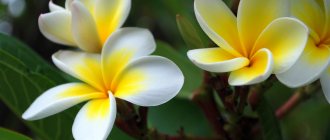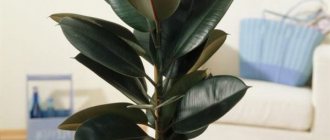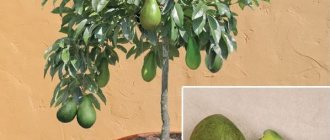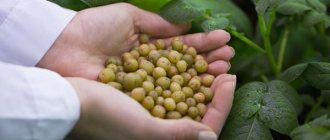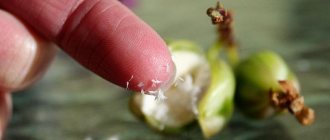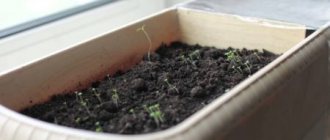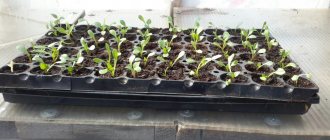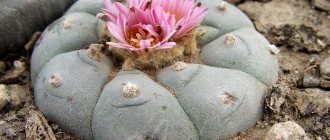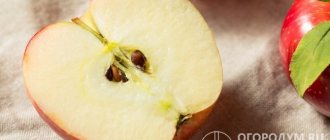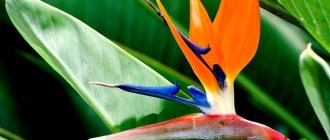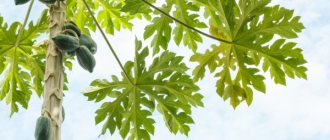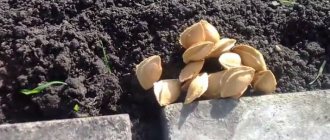Not so long ago, many exotic fruits were unknown to the inhabitants of our country: neither their names, nor appearance. Today, shops offer a wide variety of exotics. However, many people who are passionate about gardening and growing indoor flowers want to plant plants that do not grow in our climate in natural conditions, at home or in the country. One of these exotic plants is the feijoa. It turns out that this southern tree takes root well in our latitudes, but only at home.
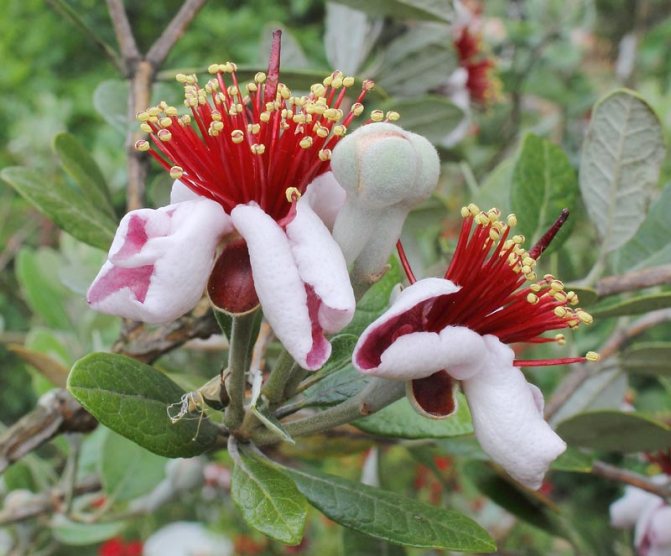
Description of feijoa
Feijoa is a shrub or small tree that is cultivated in the subtropics and tropics. Belongs to the Myrtle family. The plant is wild, mainly found in South America. Through long-term selection, indoor varieties were also bred that can be grown at home on a windowsill.
Feijoa has oblong leaves, smooth above, dark green in color, below - grayish, covered with a light down. Flowers can grow singly, in pairs, or be collected in inflorescences of several pieces. The petals are white at the edges, pinkish towards the center, there are a large number of stamens.
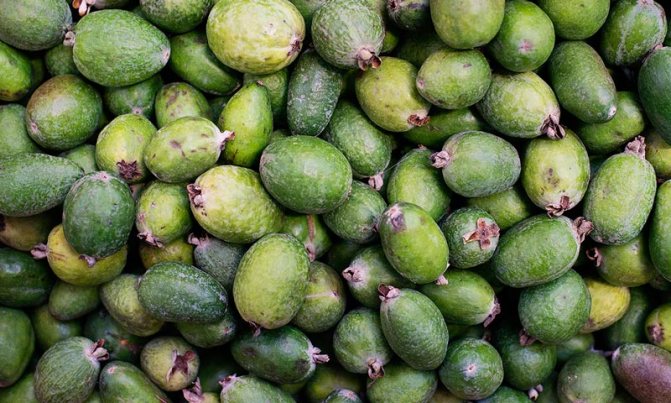

The feijoa fruit is a juicy and fleshy berry with a skin (yellow to dark green). Their taste is reminiscent of pineapple, kiwi and strawberries at the same time.
Feijoa fruits contain many useful sugars, organic acids. They are also rich in iodine, which is in the most bioavailable form. True, scientists have found that the content of this useful trace element is highly dependent on the growing conditions. Only feijoa grown near the sea can boast of a high amount of iodine. Also in fruits there is a lot of ascorbic and malic acid, pectin, fiber. It was found that they contain substances that inhibit carcinogenesis. Especially useful in this regard is the peel, which is usually not eaten.
Feijoa should not be eaten by those who are allergic to the substances that make up it.
A sufficiently high content of simple carbohydrates in fruits can harm people with second or more degree obesity, as well as diabetics.
Diseases and pests
Common plant problems are scale insects, gray rot or mealybugs, but experience with a gardener has shown that Feijoa is less susceptible to various diseases.
Related entries:
- And wherever it is not used. A little more and will be called Mega-Opuntia. Opuntia (from Lat. Opuntia) is the largest genus of the Cactus family. Most of its species consists of flat segments covered with tubercles (areoles) and ...
- Do not eat Feijoa until you know about its benefits and dangers. Influence on the body of men and women Tropical berries endow with medicinal properties. All this is due to the high concentration of vitamins and minerals in their composition. But not all people ...
- Understanding the Chemical Composition of Feijoa "from" and "to" Lyrical digression If you figured out how to grow Feijoa in apartments, mastered the technology of its pollination and got fruits, or just ...
- Stop being in the dark! Feijoa fruit or berry? It will be about an unusual fruit tree, native to the subtropics, or rather from the mountainous southern regions of South America. Contents1 Description of the plant2 ...
- Want to buy ripe Feijoa? Find out how to eat it correctly? Not so simple! With us you will not fly into the pipe by buying an unripe or spoiled Feijoa berry. The ripeness of the fruit is unexpectedly tied to the distance to the country ...
Feijoa care at home
It is not too difficult to grow feijoa in the Russian climate, but care rules must be followed.
Temperature
In summer, during the growing season, it needs + 20 ... + 25 ° C. The flower pot can be taken out to the balcony or placed outside, but always in a place protected from drafts.
In the cold season, feijoa does not need a high temperature, it can be maintained at about +15 ° C. It has been established that wild and cultivated feijoa shrubs can tolerate temperatures as low as -10 ° C. But you should not expose an indoor flower to such serious loads.
Lighting
Feijoa is home to the subtropics, where there is a lot of sun, heat and moisture. The indoor plant must be provided with sufficient lighting: it is better to put it on a windowsill from the sunny side or take it outside in a well-lit place.
If there is not enough sunlight for him, he can wither and even die. In winter, feijoa requires additional lighting to extend daylight hours.
The soil
The requirements for the soil are not too high, however, for better growth and development, you still need to prepare a special substrate for feijoa.
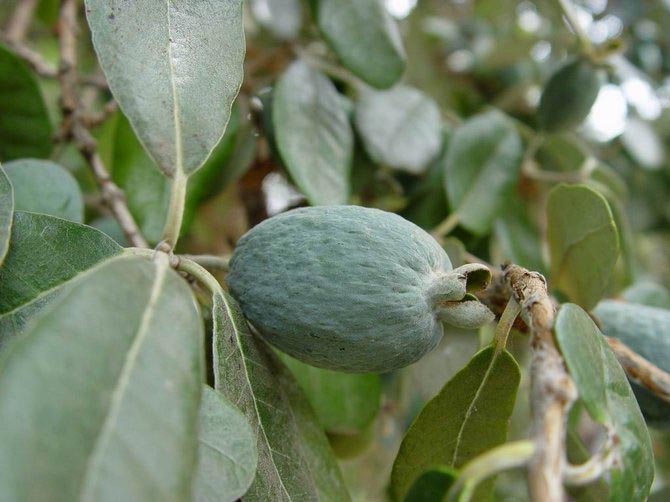

Its optimal composition is in a ratio of 6: 4: 1: 1, respectively:
- sod land;
- humus;
- river sand:
- spilled manure.
Growing at home from seed requires preparing a slightly different soil. In order for the seeds to germinate well, you need to plant them in the following substrate (proportions 2: 2: 1, respectively):
- peat;
- leafy land;
- sand.
Watering
In a subtropical climate, especially on the coasts of the seas and oceans, there is a lot of moisture in the air. Therefore, indoor feijoa also requires high humidity and abundant watering. If the air in the room is too dry, it will begin to drop leaves, dry out, and may completely die.
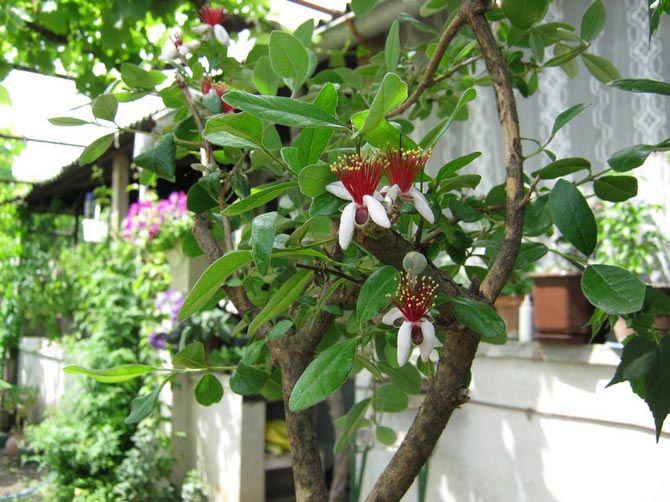

In the hot season, it should be watered very often, not allowing the earth to dry out. In addition, it is necessary to constantly spray the feijoa with a spray bottle. In the room where the pot stands, you can place several containers of water or put a special humidifier.
Top dressing
During the growing season, feijoa really needs special feeding. In spring and summer, they should be brought in at least 1 time in 2 weeks, in stages. Both mineral and organic fertilizers are required. First, the soil must be enriched with nitrogen-based fertilizing (bird droppings or mullein), after two weeks use potash (for example, wood ash), after the same time - superphosphate. Fertilize each time after abundant watering.
Transplant and pruning
A plant up to three years old requires transplanting once a year. An adult flower should be replanted as needed, every two or three years. Each time, it is necessary to take a wider capacity so that the root system can develop freely. Feijoa does not require a complete transplant: it can be carefully transferred along with an earthen clod from one pot to another. Since the aerial part of the plant is very fragile, it is worth making a transplant with someone's help.
In order for the indoor feijoa to please the eye, its crown must be properly trimmed.
The formation of a standard tree is not an easy task. The stem is an artificially made flat trunk, topped with a crown of some beautiful shape. You should periodically remove unnecessary branches, which can take quite a long time. When the plant reaches the required height, the top must be pinned. After its removal, the lateral shoots will grow. They also need to be pinned, gradually forming a crown.
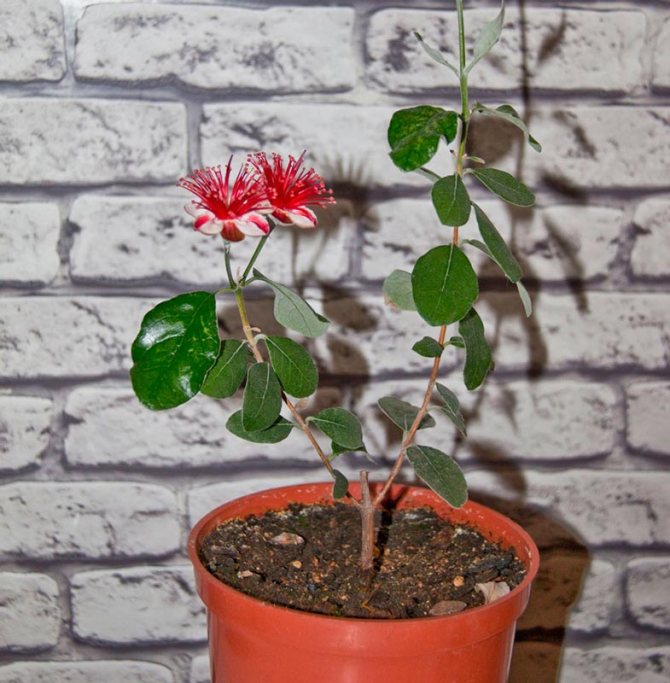

Watering
Water should be fairly abundant.Overdrying an earthen coma leads to the shedding of leaves, the death of branches and part of the root system. After watering, the water that has flowed out of the pot into the pan does not need to be drained, since after a while it will be absorbed into the earthen lump. In winter, when the air humidity drops sharply, it is useful to spray the plants with lukewarm water more often.
Feijoa is undemanding to soil, but do not forget to take into account that in a limited amount of soil fertility is quickly depleted, and the plant needs additional nutrition. Feed it in the same way as other fruit crops in the house.
Once every half a month, horse manure (1:10), superphosphate (one teaspoon for two liters of water) and an ash extract for a week (one tablespoon of deciduous wood ash for one liter of water) can be applied alternately. Before that, the ground should be well moistened. Continue feeding in the winter as you did in the summer.
Feijoa is a cross-pollinated plant. To get a harvest, you must have at least 2 copies. At home, it is rather difficult to achieve their simultaneous flowering, therefore it is better to purchase parthenocarnic (self-pollinating) varieties. These include, for example, "Crimean Early" and "Nikitsky Aromatic". There are also foreign varieties that have proven themselves well in rooms. Seedlings bear fruit in the fifth or sixth year, and rooted cuttings bloom in 3.5 years. Fruits ripened in indoor conditions are in no way inferior to those grown in the open field.
Reproduction methods of an exotic plant
Reproduction of feijoa can be done by planting seeds, cuttings or separating root growth. Of course, the easiest way to get this exotic plant is to purchase it from a specialty store. However, finding feijoa is not always possible. In this case, you can buy fruits at the supermarket and get seeds for planting. It is necessary to choose berries of full ripeness. They should be neither immature nor overripe. Otherwise, the seed will not germinate.
The contents of the fruit must be carefully squeezed out, and then placed in a saucer and filled with water, or better - a weak solution of potassium permanganate. After the bones come away from the pulp, they must be washed well under running water and dried. When completely dry, they can be sown into prepared soil.
The seeds are placed at a shallow depth (about 0.5 cm), and then covered with a film or glass container to create greenhouse conditions. If everything is done correctly, seedlings will appear in about 30 days. When the seedling has two or three pairs of leaves, it must be carefully transplanted into a separate pot.
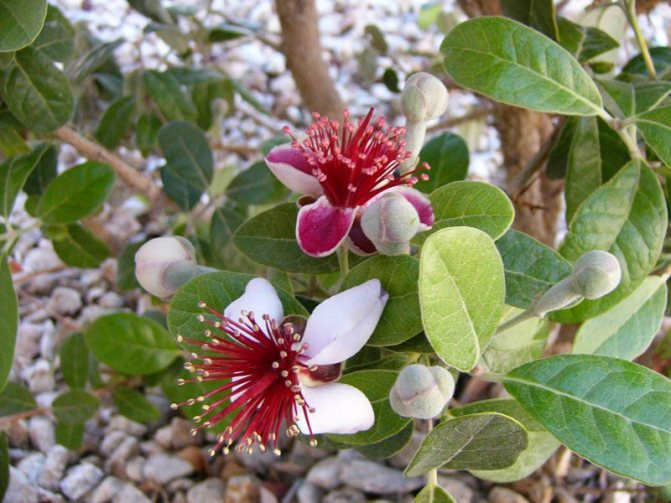

Cutting is a more complicated method, available in practice only to experienced gardeners. Beginners in this business are better off using simpler methods. Semi-lignified shoots are cut off from an adult plant. The length of the cutting should be about 10 cm, it is important that each of them has 2-3 buds.
The leaves from the twigs are cut off, leaving only a couple of the top ones. The soil for rooting cuttings is the same as for germinating seeds. The twigs are planted in moist soil, leaving about a third of the cuttings above it. After that, the soil in a pot is watered with a weak solution of potassium permanganate.
After a while, you can use any root stimulant (for example, Kornevin).
Rooting takes a long time, about 1.5-2 months. When the first leaves bloom on the branches, you can transplant the plants into separate pots.
Outdoor cultivation
Feijoa is planted in spring in March and April. The seedling should be at a distance of 4 meters from the seedling. In a subtropical climate, no special care is required. Feijoa fruits are ripe and fall off. They should be placed in a cool room so that they lie there for a while.After aging, the fruits will become tastier. Ripe fruits are sweet and sour with the smell of strawberries and anise. They have a high content of vitamins C and P, as well as iodine. Fruiting begins at about 5 years of age. Each feijoa bush can produce from 5 to 30 kg of fruit.
Feijoa flowers and fruits
Feijoa blooms from May to June-July. The flowers are four-membered, with white-pink petals, in the center there are a large number of red stamens. Flowering is usually long lasting, it can last 3-4 weeks.
In order not to create additional difficulties for yourself, it is better to give preference to self-pollinating varieties. Then the fruits will be tied in a natural way, without unnecessary effort on the part of a person.
If another variety is grown, then it is necessary to plant several plants at once (at least two). After the flowers appear with a special brush, you need to collect pollen from one plant and place it on the stamens of another.
Home-grown feijoa can taste sour. They appear only on grafted trees, at 4-5 years of age.
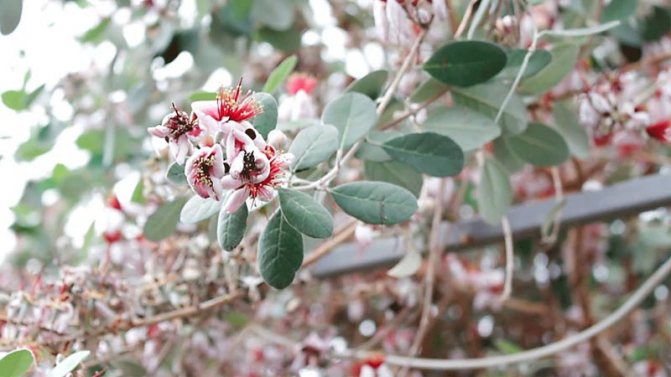

Transplant and substrate
As long as the plant is young and growing rapidly, the owner will need to replant it every year. The transplant must be done very carefully. Feijoa branches are quite fragile, so you should try to keep contact between the plant and hands to a minimum. It is not necessary to completely remove the soil from the roots, as they are also easily damaged.
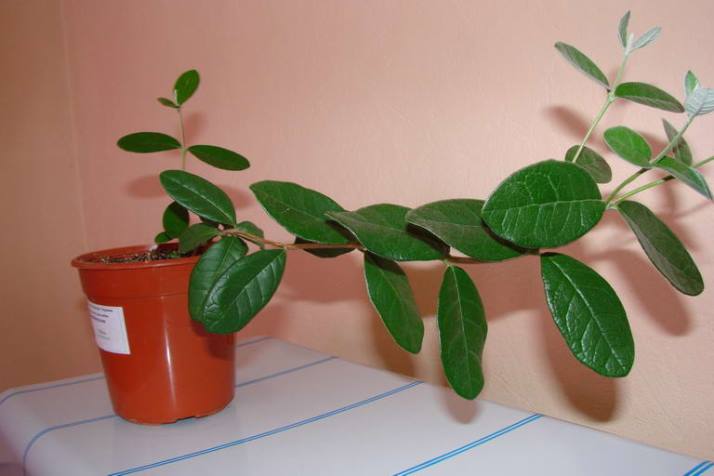

For the first 2-3 years, a mixture of sand and peat is used for transplanting. Then, when the tree grows up, you can reduce the number of transplants to once every 3 years. At the same time, the mixture changes somewhat:
- sand;
- turf;
- humus.
Everything is mixed in equal proportions. You can also add bone meal or horn shavings. It is advisable to check the acidity of the soil. Optimum values are 5.0-7.0 pH. Before backfilling the soil, a drainage layer is laid on the bottom of the pot. It is important to consider that the new pot should be about 10 centimeters larger than the previous one. Clay containers or wooden tubs work best. Do not give preference to metal pots. They, of course, are cheaper, but they tend to oxidize under the influence of the substrate. Such a chemical reaction will negatively affect the health of the plant.
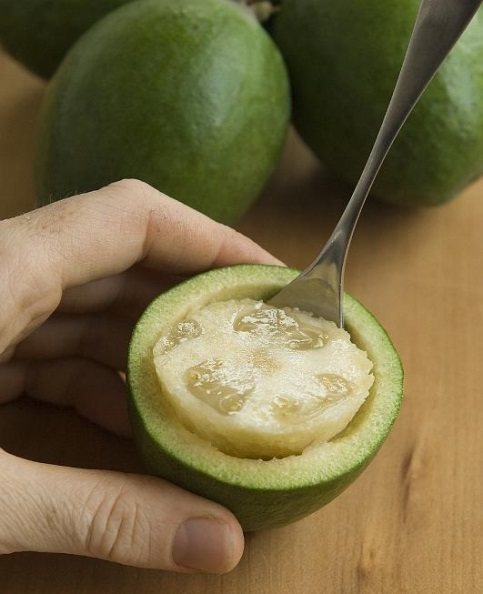

Crown formation
To give the seedling a neat shape, when it reaches a height of 30 cm, the trunk is trimmed. You need to cut it off by about one third of the total length. When the side branches grow back, they are also cut off by one third. It is better to do this at the very beginning of spring, before the plant throws out the buds. In the future, only dry branches should be cut, if they appear.
It must be remembered that cultivation should be carried out in a sufficiently lit room. Otherwise, the shrub loses its beautiful shape and becomes too elongated.
Fertilizers and feeding
Increased attention should be paid to feeding, especially during the period of active growth and flowering. The plant responds well to the separate application of nitrogen, potash and phosphorus fertilizers, with an interval of 2-3 weeks. The first top dressing is applied only three years after the first transplant.
Important. Before feeding with any fertilizer, the feijoa must be well watered.
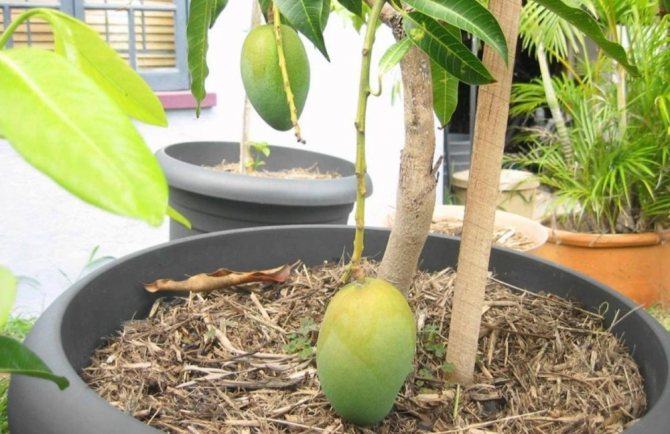

The first top dressing is applied to the soil only three years after the first plant transplant.
As a source of nitrogen, you can use a regular mullein, diluted in water at a rate of 1:10. After two weeks, phosphorus is added to the soil. To properly prepare the solution, you need a liter of boiling water and tsp. superphosphate granules.
After the mixture has cooled down enough, add another liter of boiled warm water to it. Potash fertilizer is an excellent substitute for wood ash. For this, Art. l. ash is poured with a liter of water and insisted for a week.
Air humidity and temperature
Feijoa tolerates both high (up to + 30C) and low, negative temperatures equally well.But it is desirable that in the winter period the air temperature does not exceed + 12C, and in the summer - + 20C.
Important. With proper care and watering, the plant will thrive even at higher temperatures.
If possible, then in the summer it is better to put the feijoa pot on the street or on an unglazed balcony. All year round it is necessary to maintain high air humidity in the apartment, about 80%. To provide it, you will have to spray the leaves and roots of the plant daily.
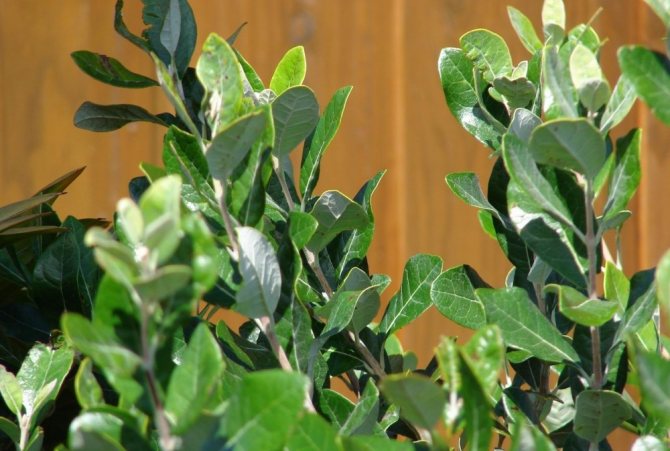

Feijoa plant leaves must be regularly sprayed with water.

